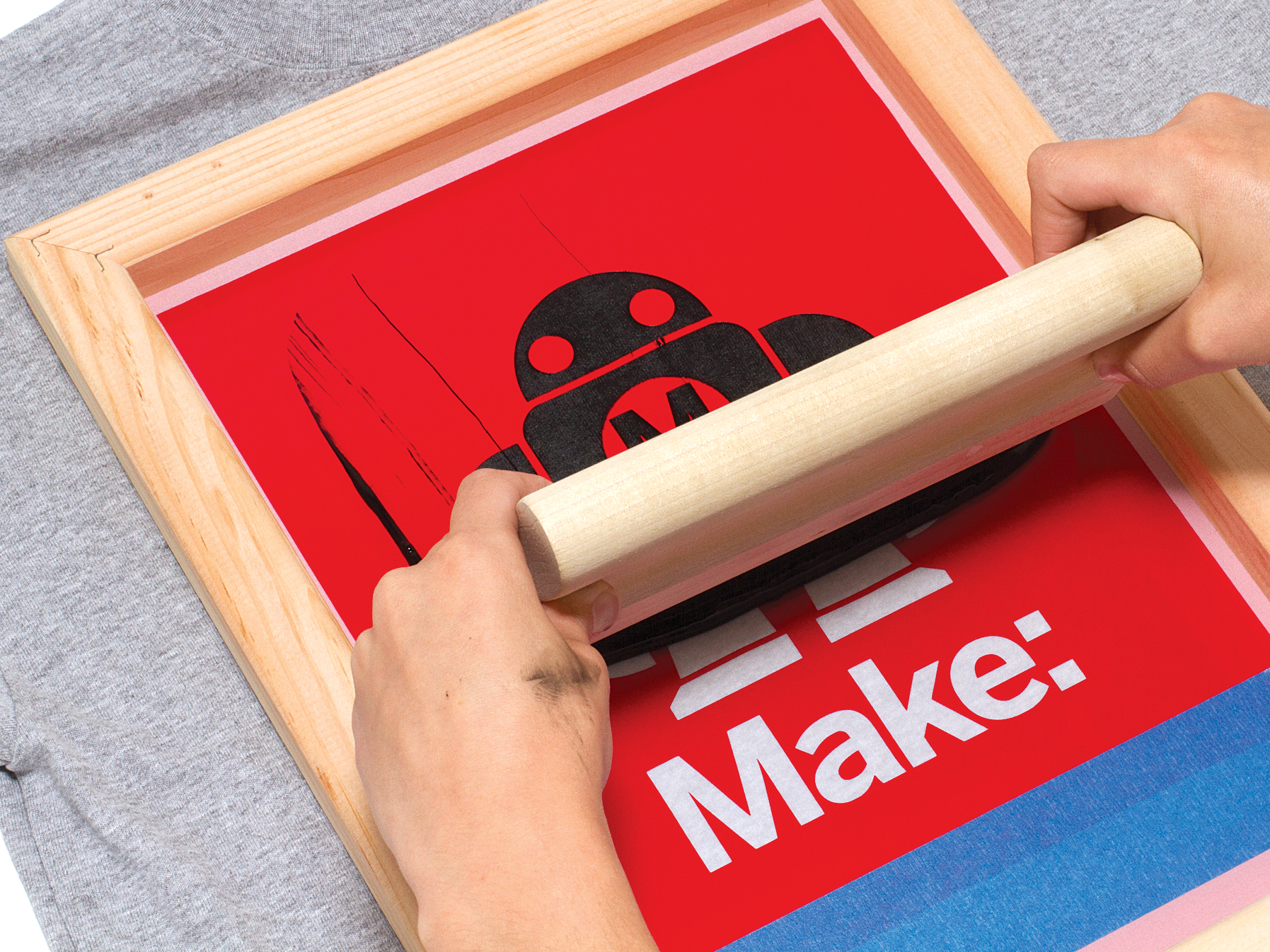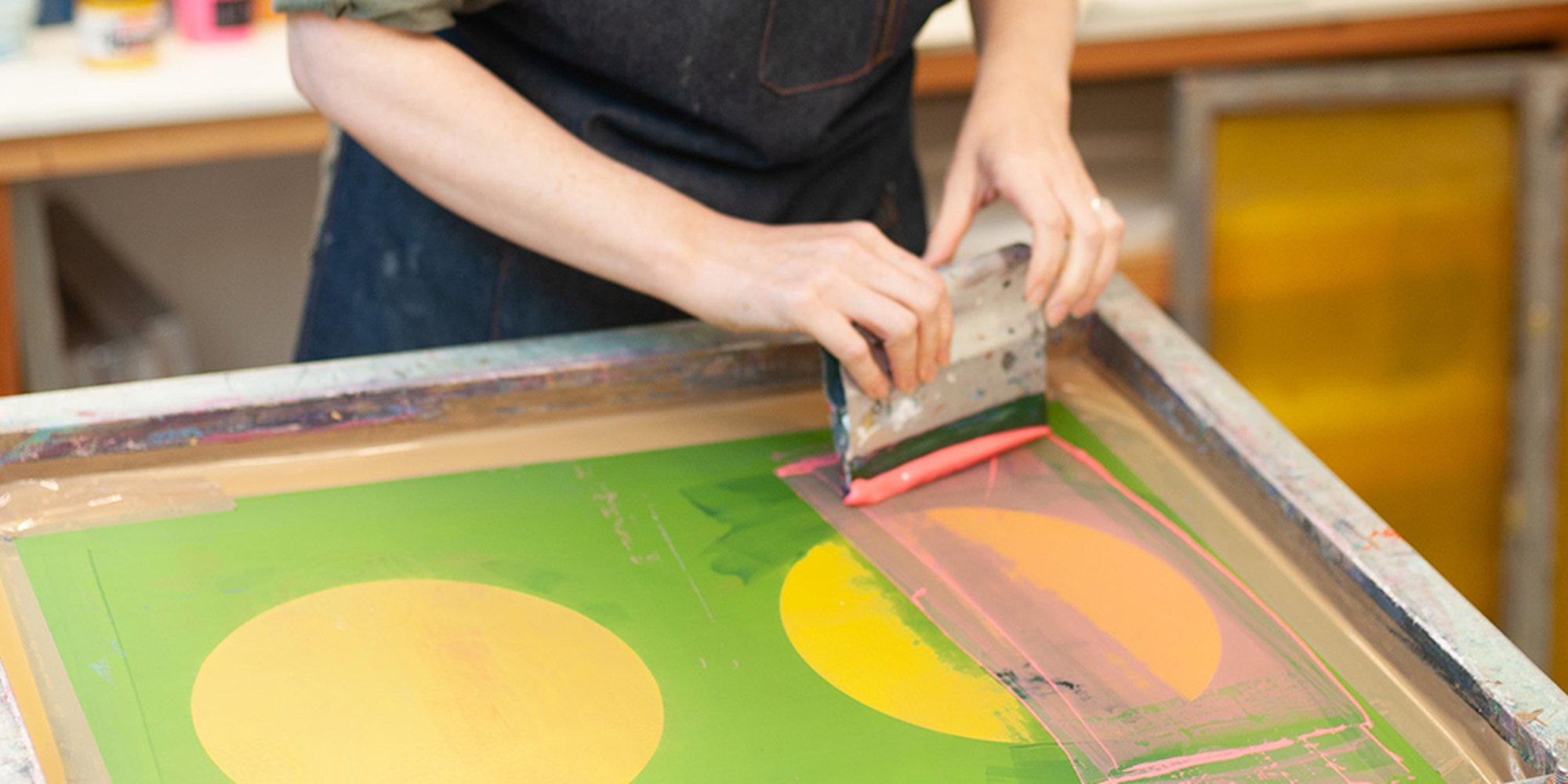Discover the Numerous Kinds of Screen Printing Techniques for Your Following Task
Screen printing supplies a varied series of methods that can improve any type of imaginative task. From conventional approaches like serigraphy to modern technologies such as direct-to-garment printing, each technique has its unique benefits. Specialty options, consisting of eco-friendly and metallic inks, present much more possibilities. Understanding these techniques can substantially impact the final outcome. The difficulty lies in selecting the most suitable method for particular requirements and desired results. What aspects should one take into consideration?

The Fundamentals of Screen Printing
Screen printing might seem complex, it is fundamentally a straightforward process that includes moving ink through a mesh screen onto numerous surfaces. The method begins with the creation of a pattern, which specifies the design to be printed. This stencil is connected to a mesh screen, commonly constructed from polyester or nylon. When the stencil is in place, ink is put on the screen and pushed with the mesh utilizing a squeegee, resulting in the wanted pattern being printed on the underlying material.
Screen printing can be performed on a large range of substrates, consisting of plastic, paper, and textile, making it a versatile selection for numerous tasks. The process permits for lively colors and complex layouts, making it prominent in industries such as marketing, art, and fashion. Recognizing these basics gears up people with the fundamental expertise called for to discover advanced methods in screen printing.
Conventional Screen Printing Techniques
Typical screen printing techniques have been utilized for centuries, maintaining the craftsmanship and creativity of this approach. This strategy makes use of a mesh screen to move ink onto a substratum, such as textile or paper, permitting for resilient and vivid layouts. The procedure begins with creating a pattern, which blocks specific locations of the screen to regulate where the ink will certainly be used.
One prominent strategy is serigraphy, often made use of for imaginative prints and minimal versions. One more is the use of water-based inks, which are green and supply a soft feel on fabrics - 10:9 Design contact. In addition, conventional approaches can include hand-operated printing, where craftsmens use ink with a squeegee, ensuring precision and focus to information
These methods remain valued in the market for their responsive top quality and the distinct structures they generate, appealing to both designers and customers that value the heritage of screen printing.
Digital Screen Printing Innovations
As the need for faster production and personalization in the printing sector has surged, electronic screen printing advancements have become a game-changer. This innovation blends typical screen printing approaches with digital processes, allowing for quick prototyping and elaborate layouts that were previously tough to accomplish. One significant improvement is the intro of direct-to-garment (DTG) printing, which promotes premium, full-color prints on different fabrics without the need for screens. Additionally, developments in ink formulations have resulted in environmentally friendly choices that maintain vibrant shades while lessening environmental influence. The usage of automated systems better enhances production, minimizing labor costs and boosting accuracy. These innovations not just satisfy little batch orders and tailored styles yet also enable for quicker turn-around times, making them ideal for organizations focused on conference consumer needs in a hectic market. Digital screen printing, subsequently, stands for a crucial advancement in the domain name of printing techniques.
Specialized Screen Printing Techniques
Exploring specialized screen printing methods exposes a varied range of strategies that push the limits of creativity and capability in the printing sector. Among these, glow-in-the-dark inks supply a special aesthetic result, making layouts come active in low-light problems. Metal inks, recognized for their sparkling surface, add a touch of high-end to printed materials. One more ingenious technique is discharge printing, which removes dye from the textile rather than adding ink, resulting in a soft, classic feeling. High-density printing produces an increased large format signage structure externally, enhancing tactile interaction. Furthermore, water-based inks are acquiring popularity for their vibrant shades and lowered ecological effect. Each of these specialty techniques satisfies specific style demands, allowing brand names and artists to produce standout products that resonate with their target markets. By leveraging these methods, businesses can boost their screen printing projects to brand-new elevations, ensuring unforgettable perceptions.
Eco-Friendly Screen Printing Options
Environment-friendly screen printing alternatives are gaining traction as the market changes in the direction of sustainability. Sustainable ink choices and making use of eco-friendly products are key components in reducing the environmental impact of the printing procedure. By adopting these practices, screen printers can add to a much more lasting future while keeping top quality results.
Lasting Ink Selections

Biodegradable Materials Usage
As the screen printing industry advances, the unification of naturally degradable materials is ending up being increasingly crucial for environmentally aware methods. Designers and producers are currently discovering inks and substrates made from natural, renewable energies that decompose a lot more successfully than conventional counterparts. These biodegradable choices minimize plastic waste and decrease ecological influence, lining up with the growing demand for lasting items.
Typical instances include water-based inks and organic cotton fabrics, both of which minimize harmful chemicals and advertise eco-friendliness. Brands that adopt these materials often boost their market allure, bring in consumers who prioritize sustainability. As recognition of ecological issues continues to rise, the change in the direction of eco-friendly products in screen printing is likely to acquire energy, promoting a greener market standard.
Selecting the Right Method for Your Task
Exactly how can one determine the most ideal screen printing method for a particular project? The choice hinges on several aspects, including the product to be published on, the complexity of the style, and the preferred manufacturing quantity - 10:9 Design Embroidery. Direct-to-garment printing is perfect for complex styles with various colors, while conventional screen printing excels for bigger runs of simpler graphics.
In addition, factor to consider of the end-use of the printed product is important. For outside applications, techniques that provide durability and weather resistance, such as plastisol ink, may be liked. Alternatively, environmentally-conscious tasks might gain from eco-friendly products or water-based inks.
Eventually, comprehending the task's unique requirements enables for an educated choice, guaranteeing both visual allure and functional durability. By reviewing additional reading design complexity, material compatibility, and production scale, printing signages one can efficiently pick one of the most proper screen printing strategy to satisfy their project's goals.
Frequently Asked Inquiries
What Is the History of Screen Printing?
Screen printing came from ancient China around 1000 ADVERTISEMENT, evolving through Japan and Europe. By the 20th century, it became preferred in business art and style, changing how designs were created and distributed worldwide.

Just how Do I Prepare Art Work for Screen Printing?
To prepare art work for screen printing, one must guarantee high resolution, make use of a suitable shade setting, produce different layers for each color, and transform message to describes, guaranteeing compatibility with the printing process and desired outcome.
What Products Are Ideal for Screen Printing?
The best materials for screen printing include premium inks, durable screens, and appropriate substratums like cotton, polyester, or blends. In addition, using appropriate solution and mops can boost the printing process and outcomes.
Can I Screen Print in the house?
Yes, screen printing in the house is feasible. With the ideal materials, setup, and techniques, people can develop top quality prints. Careful factor to consider of workspace and equipment is crucial for successful results.
What Are Typical Mistakes in Screen Printing?
Common blunders in screen printing include incorrect direct exposure times, inadequate ink consistency, misalignment of screens, inadequate cleansing of products, and ignoring to test prints. These mistakes can compromise the top quality and accuracy of the end product.
Screen printing might seem complicated, it is basically a simple procedure that involves moving ink via a mesh screen onto various surfaces. As the need for faster manufacturing and customization in the printing sector has actually risen, electronic screen printing developments have actually arised as a game-changer. Exploring specialized screen printing approaches discloses a varied variety of techniques that push the borders of creativity and functionality in the printing market. The ideal products for screen printing consist of top notch inks, durable screens, and appropriate substratums like cotton, polyester, or blends (10:9 Design Company). Common mistakes in screen printing consist of inappropriate direct exposure times, poor ink uniformity, imbalance of displays, inadequate cleansing of materials, and overlooking to test prints